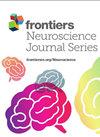瞳孔测量和自律神经系统对认知负荷和错误反馈的反应:一种无监督机器学习方法
IF 3.2
3区 医学
Q2 NEUROSCIENCES
引用次数: 0
摘要
目的瞳孔的放大受交感神经和副交感神经系统分支的控制。我们假设,瞳孔大小在认知负荷下的动态变化以及额外的错误反馈可以预测个体行为,同时还可以预测心率变异性(HRV)模式和眼球运动,从而反映出对认知压力的特定适应性。为了验证这一点,我们采用了一种无监督的机器学习方法来识别以瞳孔放大动态区分的个体群体,然后比较他们的自律神经系统(ANS)反应以及认知任务中的时间、绩效和自尊指标。方法70名参与者暴露于认知负荷和欺骗不断增加的任务中,测量瞳孔动态、心率变异、眼球运动以及认知绩效和行为数据。利用机器学习 k-means 聚类算法,瞳孔测量数据被分割成对不断增加的认知负荷和欺骗的不同反应。结果对瞳孔测量数据的聚类分析确定了两个不同的组别,其生理和行为反应的差异具有统计学意义。第 0 组显示心率变异升高,同时初始瞳孔较大。第 1 组参与者的心率变异较低,但眼球运动活动明显增加。行为差异包括第 0 组参与者报告的错误更多,自尊心更低,而第 1 组参与者的反应时间更快,对欺骗的反应更精确。各组之间的生活方式差异,如吸烟习惯和埃普沃思嗜睡量表得分的差异都很显著。结论 各组之间瞳孔动态和相关指标的差异强调了自律神经调节、认知负荷以及对认知负荷和欺骗反馈的行为反应之间复杂的相互作用。这些发现凸显了瞳孔测量与机器学习相结合在识别压力复原力和认知表现的个体差异方面的潜力。我们对瞳孔动态和自律神经系统模式的研究可以开发出适用于临床、教育和职业环境的实时认知压力监测和性能优化的远程诊断工具。本文章由计算机程序翻译,如有差异,请以英文原文为准。
Pupillometry and autonomic nervous system responses to cognitive load and false feedback: an unsupervised machine learning approach
ObjectivesPupil dilation is controlled both by sympathetic and parasympathetic nervous system branches. We hypothesized that the dynamic of pupil size changes under cognitive load with additional false feedback can predict individual behavior along with heart rate variability (HRV) patterns and eye movements reflecting specific adaptability to cognitive stress. To test this, we employed an unsupervised machine learning approach to recognize groups of individuals distinguished by pupil dilation dynamics and then compared their autonomic nervous system (ANS) responses along with time, performance, and self-esteem indicators in cognitive tasks.MethodsCohort of 70 participants were exposed to tasks with increasing cognitive load and deception, with measurements of pupillary dynamics, HRV, eye movements, and cognitive performance and behavioral data. Utilizing machine learning k-means clustering algorithm, pupillometry data were segmented to distinct responses to increasing cognitive load and deceit. Further analysis compared clusters, focusing on how physiological (HRV, eye movements) and cognitive metrics (time, mistakes, self-esteem) varied across two clusters of different pupillary response patterns, investigating the relationship between pupil dynamics and autonomic reactions.ResultsCluster analysis of pupillometry data identified two distinct groups with statistically significant varying physiological and behavioral responses. Cluster 0 showed elevated HRV, alongside larger initial pupil sizes. Cluster 1 participants presented lower HRV but demonstrated increased and pronounced oculomotor activity. Behavioral differences included reporting more errors and lower self-esteem in Cluster 0, and faster response times with more precise reactions to deception demonstrated by Cluster 1. Lifestyle variations such as smoking habits and differences in Epworth Sleepiness Scale scores were significant between the clusters.ConclusionThe differentiation in pupillary dynamics and related metrics between the clusters underlines the complex interplay between autonomic regulation, cognitive load, and behavioral responses to cognitive load and deceptive feedback. These findings underscore the potential of pupillometry combined with machine learning in identifying individual differences in stress resilience and cognitive performance. Our research on pupillary dynamics and ANS patterns can lead to the development of remote diagnostic tools for real-time cognitive stress monitoring and performance optimization, applicable in clinical, educational, and occupational settings.
求助全文
通过发布文献求助,成功后即可免费获取论文全文。
去求助
来源期刊

Frontiers in Neuroscience
NEUROSCIENCES-
CiteScore
6.20
自引率
4.70%
发文量
2070
审稿时长
14 weeks
期刊介绍:
Neural Technology is devoted to the convergence between neurobiology and quantum-, nano- and micro-sciences. In our vision, this interdisciplinary approach should go beyond the technological development of sophisticated methods and should contribute in generating a genuine change in our discipline.
 求助内容:
求助内容: 应助结果提醒方式:
应助结果提醒方式:


